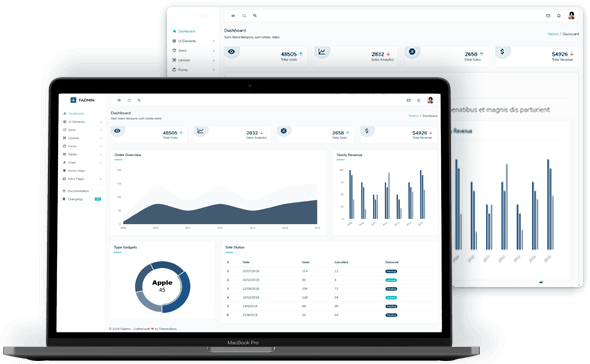Tech professionals often grapple with the debilitating effects of OCD, which can hinder their performance and creativity. Among the most effective treatments, how does ERP therapy help with OCD? It offers a structured method to confront these challenges. By gradually facing anxiety triggers, individuals can learn to resist compulsive behaviors, leading to greater control over their lives. As they navigate this process, many uncover surprising insights about their resilience. What specific strategies can they employ to enhance their journey toward recovery?
Key Takeaways
- ERP therapy helps tech professionals confront anxiety-provoking triggers, reducing the intensity of OCD symptoms and improving focus on tasks.
- Gradual exposure in ERP allows individuals to tolerate discomfort without resorting to compulsive behaviors, enhancing workflow and productivity.
- Response prevention techniques in ERP teach clients that anxiety diminishes when compulsions are resisted, breaking the cycle of OCD.
- Cognitive restructuring within ERP fosters a positive mindset, empowering tech professionals to reframe negative thoughts and build self-esteem.
- Success stories from ERP participants create a sense of community, encouraging tech professionals to seek support and share their experiences.
Understanding OCD: Challenges Faced by Tech Professionals
While many individuals experience anxiety in their daily lives, tech professionals often face unique challenges stemming from Obsessive-Compulsive Disorder (OCD). The fast-paced and detail-oriented nature of the tech industry can exacerbate OCD symptoms, leading to intensified perfectionism and intrusive thoughts. These professionals may grapple with compulsive behaviors that disrupt workflow, such as excessive code-checking or repetitive task execution. The fear of making mistakes can result in significant stress, isolation, and burnout. Additionally, the stigma surrounding mental health in high-pressure environments can prevent individuals from seeking support, leaving them feeling alienated. Understanding these challenges is vital for fostering a compassionate workplace culture that acknowledges the complexities of OCD and supports tech professionals in their journey toward recovery and belonging.
What Is ERP Therapy and Its Role in Treating OCD?
Tech professionals struggling with OCD often find their daily routines hindered by compulsive behaviors and intrusive thoughts. Exposure and Response Prevention (ERP) therapy is a structured intervention designed to address these challenges effectively. ERP focuses on exposing individuals to their sources of anxiety while simultaneously preventing the accompanying compulsive responses. This evidence-based approach fosters resilience by allowing individuals to confront their fears in a controlled environment. By gradually facing their obsessions without engaging in rituals, tech professionals can learn to tolerate discomfort and reduce anxiety. The goal is to break the cycle of OCD, enabling individuals to reclaim their lives and enhance their productivity. Understanding ERP’s role in treating OCD is vital for those seeking relief and a sense of belonging within their professional communities.
How Does ERP Therapy Help With OCD?
How does ERP therapy help with OCD? ERP, or Exposure and Response Prevention, empowers individuals to confront their fears without resorting to compulsive behaviors. This therapy provides a structured approach to break the cycle of OCD, fostering resilience and self-acceptance.
- Gradual Exposure: Clients face their fears in a controlled manner, reducing anxiety over time.
- Response Prevention: By resisting compulsive actions, individuals learn that anxiety diminishes naturally.
- Cognitive Restructuring: ERP encourages reframing negative thoughts, enhancing self-esteem and coping strategies.
Through this evidence-based method, ERP therapy nurtures a sense of community and belonging, allowing tech professionals to reclaim control over their lives and connect more deeply with themselves and others.
Success Stories: Tech Professionals Overcoming OCD With ERP
Success stories of tech professionals overcoming OCD with ERP therapy highlight the transformative impact of this treatment. Many individuals in the tech industry have reported significant improvements in their quality of life after engaging in ERP. For instance, one software engineer shared how confronting intrusive thoughts led to a drastic reduction in anxiety levels, enabling him to focus better on his projects. Another tech consultant described how ERP provided him with practical tools to manage compulsive behaviors, allowing him to enjoy personal relationships and professional growth. These narratives not only exemplify resilience but also foster a sense of belonging among those struggling with similar challenges. Ultimately, these experiences demonstrate how ERP therapy helps with OCD, empowering individuals to reclaim their lives and careers.

Steps to Get Started With ERP Therapy for OCD Management
Beginning the journey toward managing OCD through Exposure and Response Prevention (ERP) therapy can seem intimidating, yet it is an essential step for those seeking relief from debilitating symptoms. To get started with ERP therapy for OCD management, individuals can follow these steps:
- Seek Professional Guidance: Consult a mental health professional experienced in ERP to tailor a plan that addresses specific OCD concerns.
- Identify Triggers: Work with the therapist to pinpoint situations or thoughts that provoke anxiety, forming the basis for exposure exercises.
- Gradual Exposure: Engage in gradual, controlled exposure to these triggers while learning to resist compulsive responses, fostering resilience over time.
Frequently Asked Questions
Can ERP Therapy Be Combined With Medication for OCD Treatment?
Research indicates that ERP therapy can be effectively combined with medication for OCD treatment. This integrated approach often enhances symptom relief, allowing individuals to experience greater emotional stability and improved functioning in their daily lives.
How Long Does ERP Therapy Typically Last for OCD?
ERP therapy for OCD typically lasts from 12 to 20 sessions, with each session lasting about 60 minutes. The duration can vary based on individual progress, severity of symptoms, and personal goals in treatment.
Is ERP Therapy Suitable for All Types of OCD?
ERP therapy is generally suitable for various OCD types, effectively addressing intrusive thoughts and compulsive behaviors. However, individual experiences may vary, necessitating tailored approaches and consultations with mental health professionals for best outcomes and support.
Can I Practice ERP Techniques on My Own?
Practicing ERP techniques independently may be challenging and less effective without professional guidance. Individuals often benefit from structured support, as therapists provide essential tools and insights that enhance understanding and emotional resilience in confronting OCD.
What Should I Expect During My First ERP Therapy Session?
During the first ERP therapy session, individuals can expect an empathetic environment, where a therapist will outline treatment goals, introduce exposure techniques, and collaboratively develop a personalized plan to confront OCD challenges effectively and compassionately.
Conclusion
To sum up, ERP therapy offers a structured and effective approach for tech professionals grappling with OCD. By systematically confronting anxiety triggers and resisting compulsive behaviors, individuals can regain control over their lives and enhance their productivity. The evidence supporting ERP’s efficacy, alongside inspiring success stories, highlights its transformative potential. As tech professionals embrace this therapeutic journey, they not only diminish their anxiety but also cultivate resilience, fostering a healthier balance between their work and personal lives.
You May Also Like To Read:




